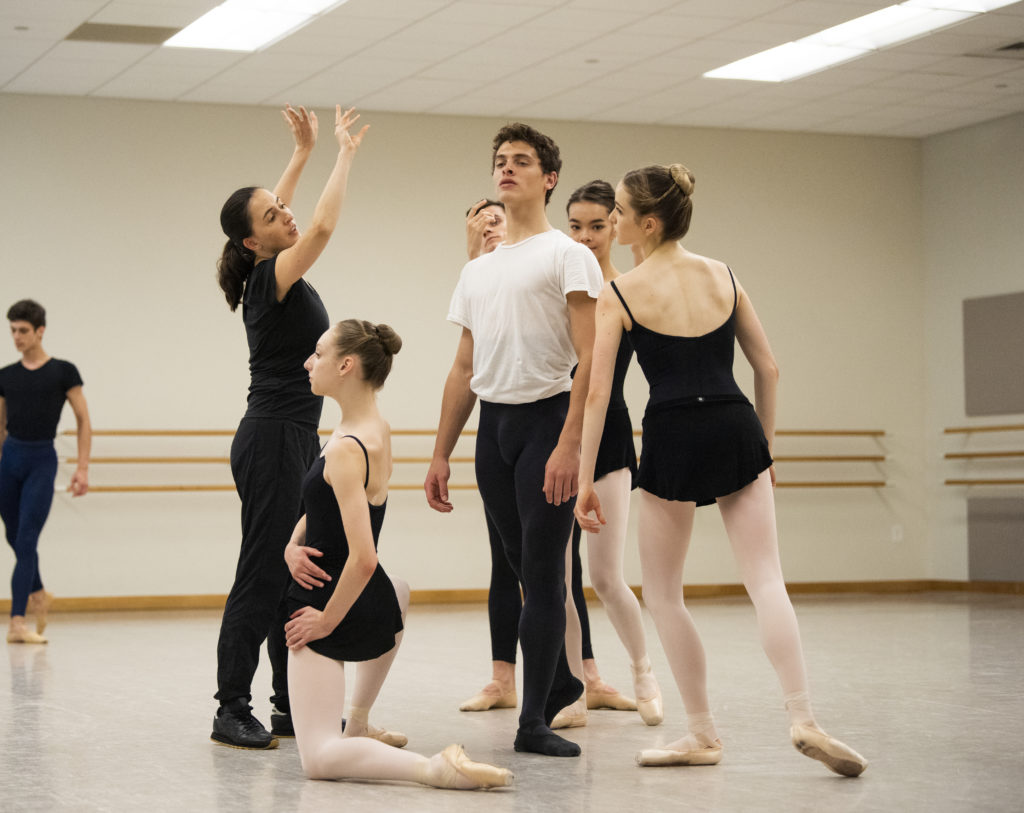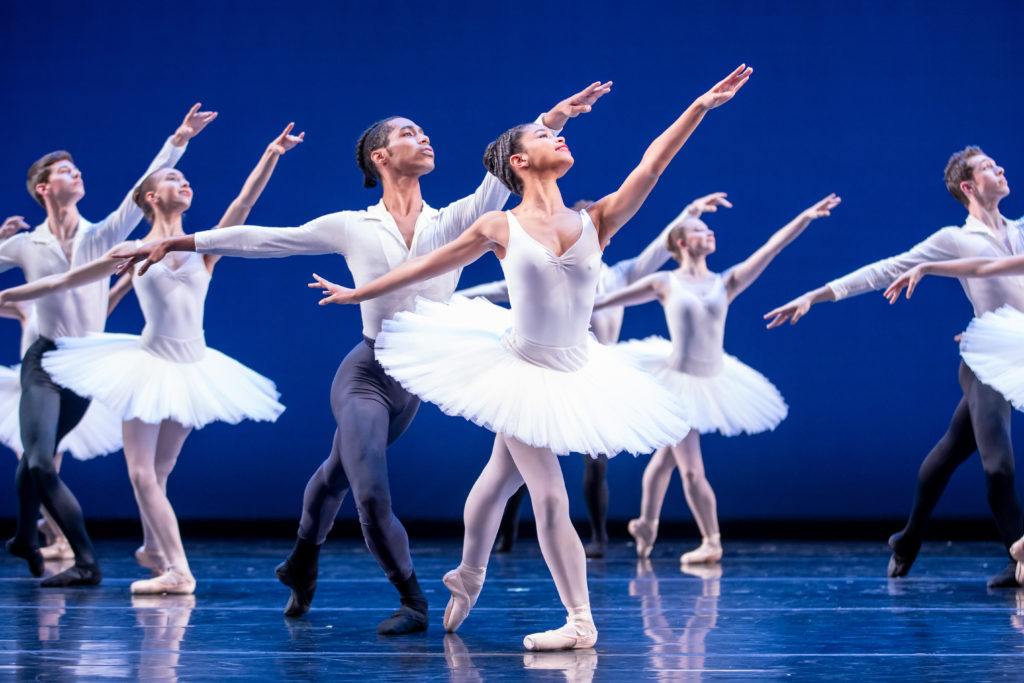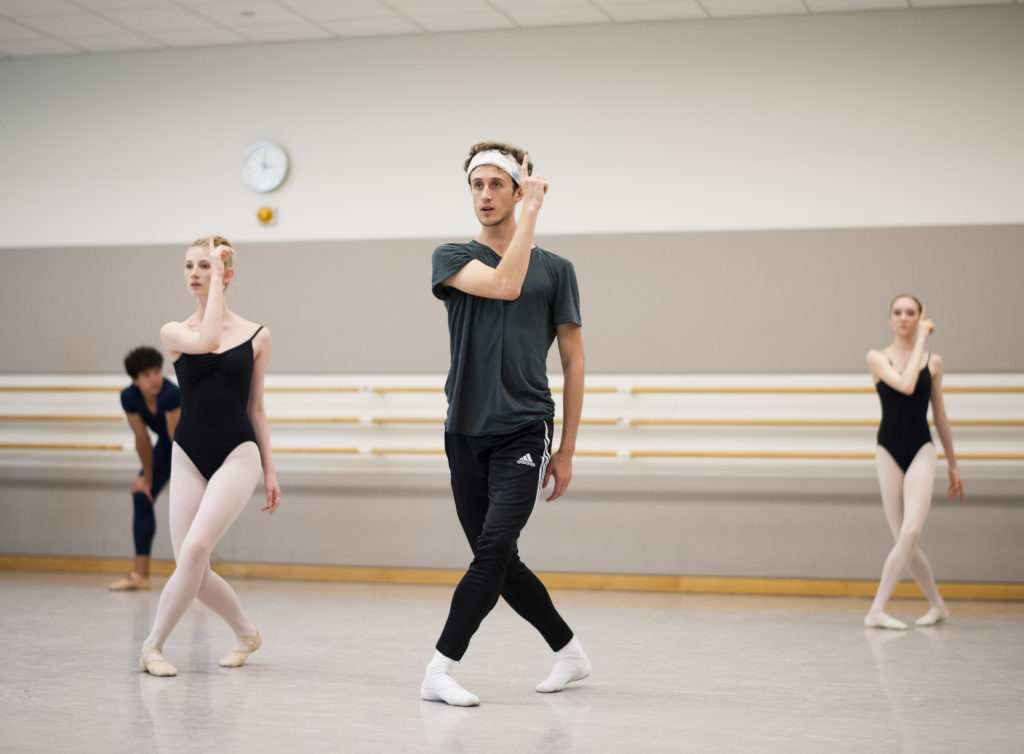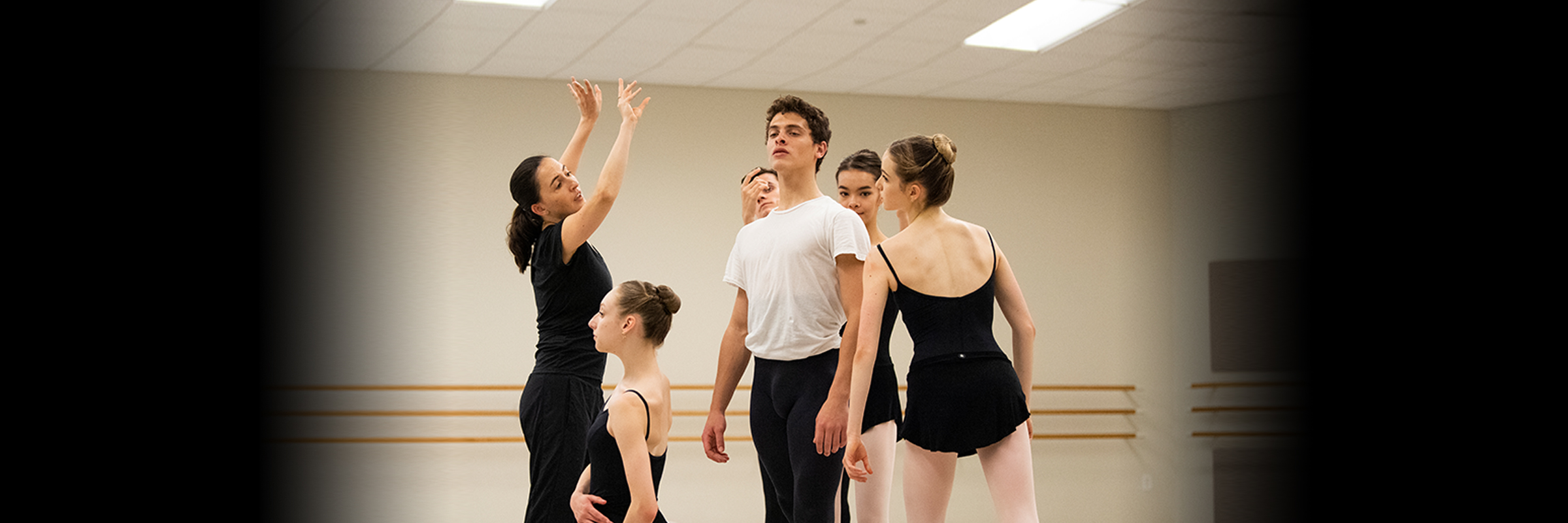The Art of Education
SF Ballet School Trainees Tour to Ballet Sun Valley
This week, San Francisco Ballet School Trainees take three world premieres to Idaho’s heartland: Dana Genshaft’s Heliotrope, Karen Gabay’s Amour et Printemps, and Alexandre Cagnat’s In Memory of Forgetting.
Creating new ballets is an important part of the Trainees’ pre-professional training. But what does it take? We spoke to three choreographers to find out.
A Legacy of Contribution: Dana Genshaft's Heliotrope

“This is is your opportunity to contribute as a dancer. We’re making this ballet together,” says Dana Genshaft. She’s addressing Jasper Stanford, a seventeen-year-old Bay Area native and the subject of the first-act solo in Heliotrope, her new ballet heading to Sun Valley this week.
As an SF Ballet School Trainee, Stanford has fine-tuned his technique; his turns are crisp, and his jumps are high. But to Genshaft, the next step in Stanford’s pre-professional training—and arguably the most challenging one—is to empower him to bring his ideas to the table: “It’s typical for a choreographer to prefer to work with professional dancers, because professional dancers will finish your sentences for you,” Genshaft says. “But a student's mentality is different. In their effort to please you, to do exactly what you’ve asked of them, they lose the essence of in-the-moment creation.” Simply put? It takes experience to master the art of “half and half” contribution in the creation of a world premiere, and to know whether or not the contribution is welcome in the first place, she says.
The music of Heliotrope also offers teaching moments for Genshaft. Mason Bates’ “intimidatingly difficult” score, called Sea Blue Circuitry, includes counts of 1s, 5s, and 7s, imparting lessons of musical phrasing atop mixed meters. Genshaft credits her ability to navigate the Trainees through Heliotrope’s challenges to her longevity with the Company (she spent 15 years as an SF Ballet dancer) and four years as faculty in the School. “I have the luxury of knowing these dancers well, and knowing what they're capable of,” she says. “It’s a hard ballet, with complex music. They’re students, but I’m not creating a ballet for young people. I want them to rise to the occasion, and I know exactly how far I can push to get them there.”
Motive in the Movement: Karen Gabay's Amour et Printemps

There’s a kaleidoscopic quality to Karen Gabay’s choreography, revealed each spring in the full-school demonstration she creates for SF Ballet School’s Spring Festival, and in Amour et Printemps, her resplendent display of classical dance that has its world premiere at Ballet Sun Valley on Saturday night. Set to the music of Chabrier, Johann Strauss, and Waldteufel, Amour et Printemps transport the Trainees to the late 19th century, where tutus are stiff, but movement—and romance—flows.
“It’s that ‘young love’ thing,” Gabay says. “There’s the girl who wants the boy, the boy who wants the girl. And then there’s a little bromance, too, in the trio.” Gabay calls this light-narrative approach to her five-movement classical ballet “good training ground” for the Trainees, to prepare them for the story ballets—the Giselles, Swan Lakes and Don Quixotes—on their horizon. “I model my teaching after what a real, professional career is going to be like. Yes, there’s the big finale [in Amour et Printemps] where they can show off their technique and their tricks,” she says. “But wherever they are in the piece, the motivation of movement counts. It’s not about ‘lifting’ the arm, but about directing that arm towards somebody. That simple change affects how you think about the placement of your head and the line of your body.” Coupled with good eye contact, Gabay says, moving with motivation is key to keeping an audience engaged.
Ultimately, it’s the sparkling athleticism of Amour et Printemps that exposes what comes most naturally to the Trainees: energy and drive. “When you’re that age, that hunger is there,” says Gabay, whose 35-year career as a dancer began when she, too, was a teenager. “The Trainees just want to dance. And that’s what makes it so much fun to work with them.”
Learning in Tandem: Alexandre Cagnat's In Memory of Forgetting

When memories make you who you are, what happens when you lose them? The question is at the center of Alexandre Cagnat’s new ballet, In Memory of Forgetting, set to all-Baroque music by Vivaldi and master-mentor pair Monsieur de Sainte-Colombe and Marin Marais.
Cagnat is a member of SF Ballet’s corps de ballet, which he joined shortly after his own year as a Trainee in 2015—a year he calls a “rich and fulfilling experience . . . a source of growth and maturity." Now, as he guides the Trainees through In Memory of Forgetting, his second-ever ballet, Cagnat finds he fits the roles of both student and teacher.
When he launched into the first rehearsals of his new piece, Cagnat built out phrases, teaching the Trainees their movements in isolation. But after setting the first two movements, he discovered he had missed a vital step in the creative process: “It was my mistake. When I began, I showed them aesthetically what I wanted, but didn’t talk through the purpose of the piece,” he says. “So we took a break. We sat down together, and I told them exactly what I wanted us to give back to the audience—the moving pictures, the souvenirs of life, the significance of memory. From there, they really understood. They got it.” And thus, rehearsal was back on track.
Once the Trainees mastered the “moving pictures” of the ballet (imagine depictions of works of art, like the shape of hands in Michelangelo’s The Creation of Adam), another fear cropped up for Cagnat: “You know when you see a movie, and there’s so much potential, like the actors and music are great, but the dynamic is flat? That scared me at first,” he says. His fears, he learned, were unfounded: “The Trainees create this dynamic naturally. They’ve been really receptive to these ideas. It’s been a long and hard process, but it's been worth it.”
Header Image: San Francisco Ballet School students rehearsing Genshaft's Heliotrope // © Erik Tomasson








